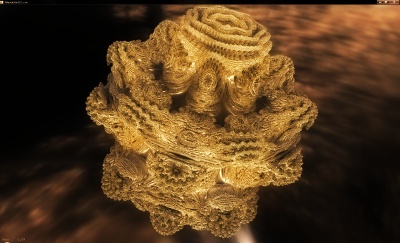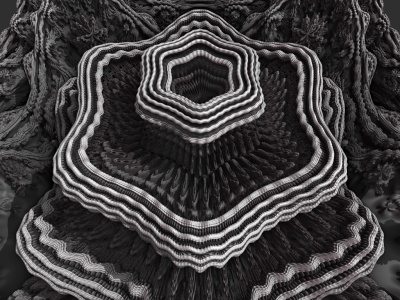Several implementations have appeared since the Mandelbulb surfaced a couple of months ago.
The first public GPU implementation I know of was created by ‘cbuchner1’. It is based on a sample from NVIDIAs OptiX SDK, and features anaglyphic 3D, ambient occlusion, phong shading, reflection, and environment maps. It can be downloaded here (Windows only and requires a forum signup).

Example made with cbuchner1’s implementation
Very interestingly this binary runs on my laptops modest GeForce 8400M. I am a bit puzzled about this – NVIDIA state that the OptiX SDK requires a Quadro or a Tesla card, and I am not able to run the Julia OptiX demo, that cbuchner1s app is derived from.
Subblue has also created a Mandelbulb implementation, released as a Pixel Bender script and a Quartz composer plugin. A number of interesting customizations makes this my favorite choice: it is possible to explore negative and fractional powers, switch to Julia sets, and the lightning options can be fine-tuned. The only drawback is that Pixel Bender does not make it possible to directly rotate, zoom, and translate the camera – you have to rely on sliders for that.
Iñigo Quílez has also created a GPU implementation, but unfortunately he has not released any code yet. A couple of videos are available on Youtube, though: Part 1, Part 2, Part 3.

Quilez also discovered this intimate connection between the Shroud of Turin and the Mandelbulb.
The MathFuncRenderer also has a Mandelbulb implementation. I had a few quirks with this one – I had to install OpenAL, and the UI was quite non-responsive, but this may be due to my graphics card.
Another very interesting implementation is the GigaVoxels Mandelbulb: Whereas most implementations cast rays and use a distance estimator to speed up the ray marching, GigaVoxels use voxels stored into an Octree, which is populated on-the-fly.
For other implementations keep an eye on Fractal Forums Mandelbulb Implementation category.
